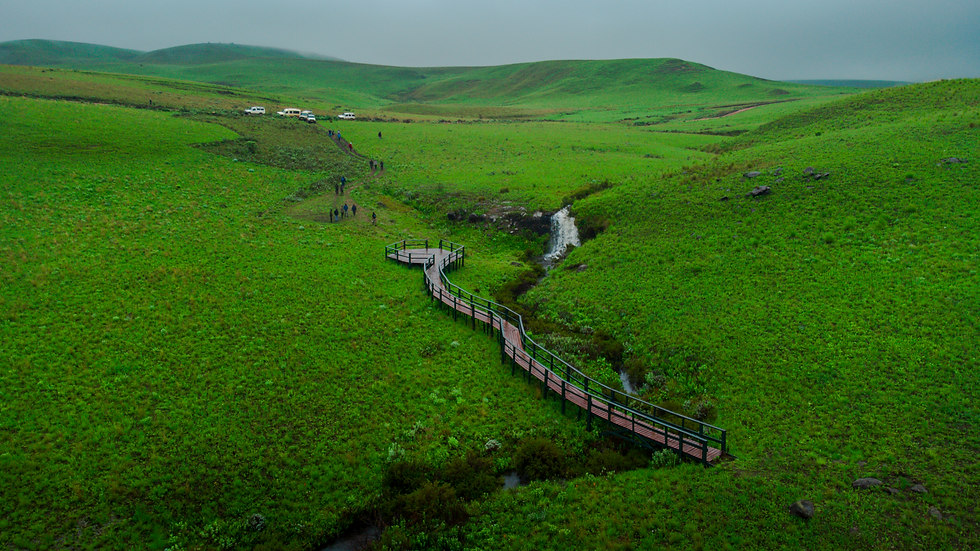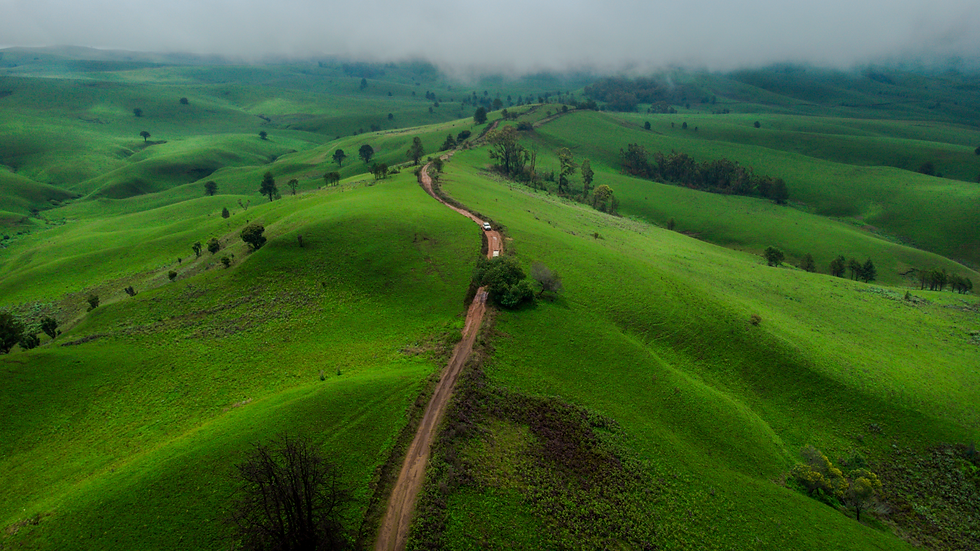Over View
Kitulo National Park, located in southern Tanzania, is often called the "Serengeti of Flowers" due to its stunning wildflower displays. Established in 2005, it is Tanzania’s first national park primarily protecting flora rather than wildlife.
Key Features:
-
Biodiversity: Home to over 350 plant species, including rare orchids, lilies, and endemic flowers.
-
Altitude: Situated at 2,600 meters (8,500 ft) above sea level on the Kitulo Plateau.
-
Wildlife: Few large mammals, but supports birds like the Denham’s bustard and endangered species like the Kipunji monkey.
-
Activities: Ideal for botanical tours, hiking, and birdwatching.
Best Time to Visit:
-
Rainy season (November–April) for vibrant blooms, though access can be challenging.
Kitulo is a unique, serene destination for nature lovers, offering a different experience from Tanzania’s famous wildlife parks.
What to see
As a tourist visiting Kitulo National Park, you can experience a variety of unique natural attractions, making it a paradise for nature lovers, hikers, and botanists. Here’s what you can see and do:
1. Spectacular Wildflower Displays (Main Attraction)
-
Orchids (45+ species) – Kitulo is famous for its rare and colorful orchids.
-
Alpine flowers – Giant lobelias, red-hot pokers, irises, and geraniums.
-
Endemic species – Such as the striking Impatiens rosulata (a type of balsam).
-
Best viewing – Peak blooming season (December to April).
2. Birdwatching (Over 50 Species)
-
Rare & endemic birds like the Denham’s bustard, blue swallow, and mountain marsh widow.
-
Migratory birds (November–April).
3. Wildlife Spotting (Though Limited)
-
Kipunji monkey (one of the world’s rarest primates).
-
Chameleons, butterflies, and small mammals like the Cape clawless otter.
4. Scenic Hiking & Walking Trails
-
Matema Beach Trail – Offers panoramic views of Lake Nyasa.
-
Livingstone Mountains – Stunning highland landscapes.
-
Waterfalls & Rivers – Explore hidden streams and cascades.
5. Cultural Experiences
-
Local tribes (Bena & Kinga people) – Learn about traditional farming and medicinal plant use.
-
Nearby Matema Beach – A relaxing lakeside retreat after exploring the park.
Best Time to Visit:
-
Wildflowers: November–April (rainy season, best blooms).
-
Hiking & Clear Views: June–October (dry season).
Kitulo is a hidden gem—perfect for those who love botany, hiking, and peaceful nature escapes rather than big-game safaris
What to do
Kitulo National Park offers a range of unique activities for tourists, focusing on nature, hiking, and tranquility rather than traditional wildlife safaris. Here’s what you can do:
1. Botanical & Wildflower Tours (Main Highlight)
-
Guided flower walks – Explore fields of orchids, lilies, irises, and rare alpine plants.
-
Photography safaris – Capture stunning landscapes and vibrant blooms (best Dec–Apr).
-
Research & conservation visits – Learn about endemic plant species.
2. Hiking & Trekking Adventures
-
Plateau walks – Gentle hikes through flower-filled meadows.
-
Livingstone Mountains trek – More challenging routes with panoramic views.
-
Waterfall exploration – Discover hidden cascades in the park’s valleys.
3. Birdwatching (Over 50 Species)
-
Spot rare birds like the Denham’s bustard, blue swallow, and mountain marsh widow.
-
Early morning birding walks with a guide.
4. Cultural & Community Visits
-
Meet the Kinga people – Learn about traditional farming and medicinal plants.
-
Local village tours – Experience rural Tanzanian life near the park.
5. Picnicking & Relaxation
-
Scenic picnic spots amid wildflower fields.
-
Quiet meditation or nature immersion in the serene highland environment.
6. Nearby Attractions (Combination Trips)
-
Visit Matema Beach (on Lake Nyasa) for swimming and relaxation.
-
Explore Mbeya or Njombe towns for local markets and culture.
Best Time for Activities:
-
Flowers & Greenery: November–April (rainy season).
-
Hiking & Clear Skies: June–October (dry season).
Since Kitulo is less touristy, hiring a local guide is recommended for flower identification, birdwatching, and trekking routes.












